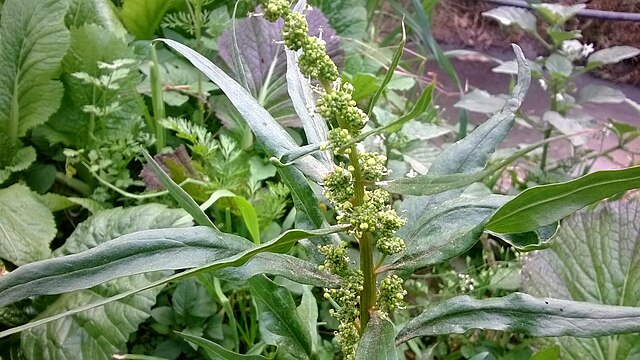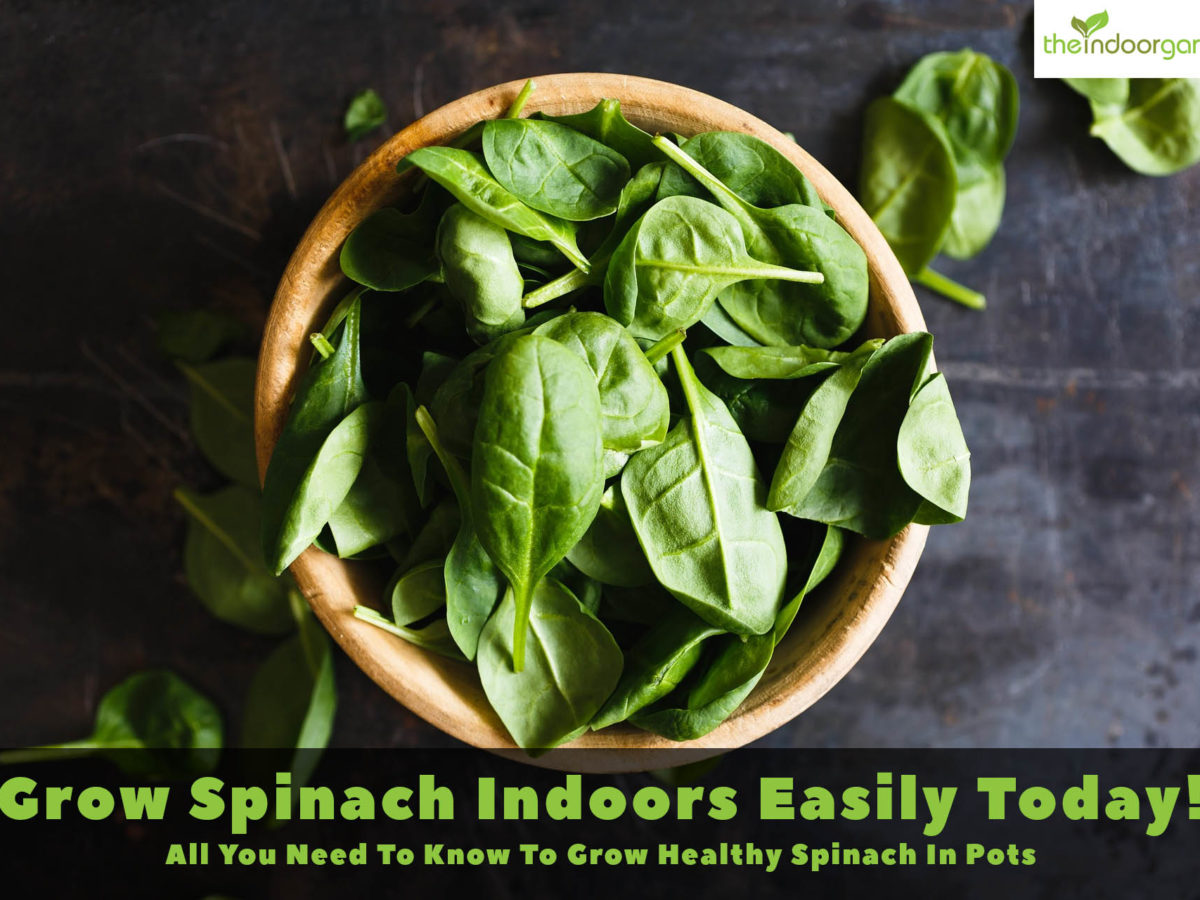Love it or hate it, you can’t deny that spinach is one of the healthiest veggies out there. Packed with vitamins and nutrients it makes a great addition to nearly any diet. If that’s not enough, it’s also super easy to grow indoors and is one the few veggies that can be grown in lower light areas. Read on to learn how to start growing spinach indoors!
Choosing The Container
When selecting a container to begin growing spinach indoors you’ll want to select one that is more wide than deep. This is due to spinach’s relatively shallow root system that needs more space outwards than down.
For depth, 8-12 inches will usually do. For width, it depends on how much spinach you’re looking grow, but aim for at least a foot for small batches. Spinach roots tend to spread out but not burrow that deep.
Whatever type of container your pick make sure it is well draining or is lined with an inch or so of rocks to prevent water stagnation. Drainage holes are an easy way to prevent overwatering issues and create soil that drains more naturally.
Planting Spinach
If starting from seeds you’ll want to sow them roughly 1/2 inch deep directly into the pot or seeding tray. Leave around 3 inches between each seed to give them ample space to grow. Once planted, they generally take 1-2 weeks to germinate depending on your growing conditions.
If starting in a seeding tray, wait until 3-4 leaves appear on each plant before transplanting them to their permanent home. Sooner than this and the plant might not be strong enough to take the transplanting well.
You can also easily start with seedling plants that can be bought at most hardware stores or nurseries. Simply repot these into an appropriate sized container and fill with high quality potting soil. Give it a dose of water immediately after planting too.
Growing Spinach From Cuttings
The last option when you’re planting is to use cutting. Take your spinach leaves, with the roots in-tact, and cut off the top half of the leaves. Make sure to use healthy looking spinach that is not wilting and has no damage to the root structure.
Then, dig small holes in your container and plant the spinach cuttings in them. After a week or so, add some nitrogen rich fertilizer to encourage big, leafy growth. After that, continue on with normal care. This is a great way to re-use your old spinach and get more harvestable veggies each year.
Lighting
Spinach is one of the few veggies that can be grown in partial shade, making it ideal for lots of gardeners. During the summer months placing it near a bright window, but partially back to avoid the most intense of the sun’s rays, will be enough to ensure it get’s proper sunlight. It also grows great in rooms that are naturally sunny, but that are not directly in the light.
However, during the cool fall/winter months you may need to move it to a location that gets more direct sunlight. This is due to the lessened intensity of light during this time period in some climates. While spinach can grow in shade, it still does need a decent dose of light per day.
Watering & Feeding
Take good care to avoid overwatering as it can lead to diseases and the dreaded root rot. Check the soil every few days to see if the soil is still moist. If not, give it a decent amount of water to lightly soak the soil. Don’t drench it though. If you have drainage holes, water until it begins to leak out of them.
Spinach doesn’t usually require fertilizer. However, if you’re growing indoors you may want to every few months as the soil will start to lose nutrients. Use a nitrogen rich fertilizer to help replenish the soil and promote healthy growth. Use a weak strength fertilizer diluted to half strength for best results when growing in containers.
You can also repot the plant with new soil once a year to help recycle the soil. This can often provide enough nutrients to remove the need to fertilize. The only exception to this when growing from cuttings detailed above. Cuttings generally require a bit more nutrients to get started, so it’s a good idea to give them a little extra about a week after planting.
Harvesting
You should begin to harvest your spinach plant once there are several leaves of 4-5 inches each. Simply pick off the larger, outer leaves while leaving the smaller ones so it will continue to grow.
During the summer, you may notice that the plant begins to form an erect stem and starts to flower. Once this happens the plants foliage will change in flavor and become more bitter. It’s a good idea to harvest before this happens for best flavor.
When properly harvested, spinach will continue to grow back. A single spinach plant should give you a few harvests over the course of a growing season.
How To Stop Spinach From Bolting
Bolting, or the flowing described above, is a large problem for spinach growers as it can ruin the flavor of the plant. The first step is to understand why spinach bolts in the first place.
Here is an example of spinach that has bolted, notice the growth in the middle of the leafs.

Spinach bolting typically occurs in warmer weather when the temperatures rise and the day is at its longest. The key then is to carefully control the temperature and sunlight that the spinach is exposed to.
For temperatures, anything over 75°F is going to induce bolting. You’ll want to keep the temperature below this to hold off bolting as long as possible. Spinach is a colder weather crop, so you’re not going to harm the plant with any reasonable indoor temperature. Sitting in direct sunlight can inadvertently raise the temperature around the plant, which is why it is suggest to plant in partial shade.
If you’re growing outdoors, the best way to combat this is to plant early. This gives ample time for the spinach leaves to grow and be harvested before bolting occurs. As you can’t control the temperature outdoors it’s much more difficult to prevent.
You’re other option is use bolt resistant varieties. There are specifically engineered breeds of spinach that are less likely to bolt than others. The easiest options is probably to use one of these. This doesn’t mean they won’t bolt, but it will take longer giving you more time to harvest.
Growing Spinach Indoors
Spinach is an excellent addition to any garden, and makes a healthy snack to boot. Add onto that the ease of growing and there’s no reason not to be growing this delightful veggie!

Growing Spinach Indoors FAQs
1. Can Spinach Be Grown In Partial Shade?
Yes, like some other leafy greens spinach can grow in partial shade and doesn’t require direct sunlight. This gives growers a lot more freedom in where they plant it compare to more light intensive vegetables.
2. Why Does Spinach Bolt?
Spinach bolting usually occurs when the temperature rises and the plant gets lots of direct sunlight.
3. Is Spinach Frost Tolerant?
Spinach grows fairly well in cold weather and can actually survive light frosts. It’s still best not to expose it too much extreme weather, but you don’t have to be as careful as you do with most plants.







